Top 5 Exercises for a Stronger, Toned Butt | Expert Tips
Top 5 Exercises for a Stronger, Toned Butt
Many people want a toned backside. Strong glutes make your body look better and help with strength and movement. This guide will show you the top 5 exercises to get a stronger, more defined butt.
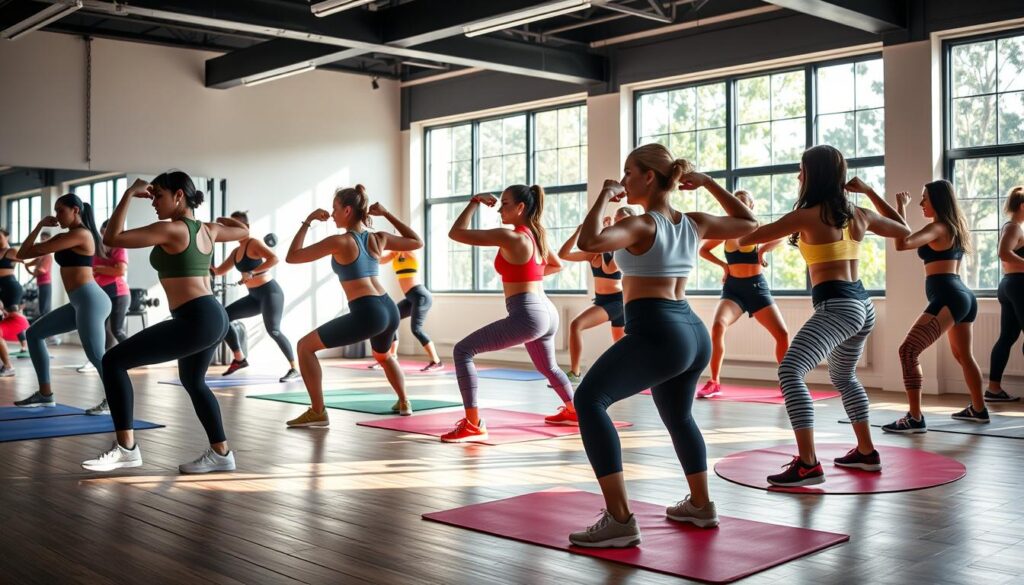
Key Takeaways
- Incorporate compound exercises that target the glutes for maximum results
- Proper form and technique are essential for safely and effectively building glute strength
- Progressive overload principles can help you continuously challenge and grow your glutes
- Nutrition and recovery play a vital role in supporting glute development
- Consistency and patience are key when it comes to achieving your desired glute transformation
Understanding Glute Anatomy and Why Strong Glutes Matter
Getting a toned body starts with the glutes. They are key for fitness and performance. Let’s explore the anatomy of the glutes to see what muscles are important.
Key Muscles That Make Up Your Glutes
The glutes have three main muscles: the gluteus maximus, gluteus medius, and gluteus minimus. Each muscle has a special role in hip stability, leg movement, and strength.
- The gluteus maximus is the biggest and strongest. It helps extend and rotate the thigh.
- The gluteus medius helps move the thigh outward and rotate it inward. It keeps the hip stable and balanced.
- The gluteus minimus also moves the thigh outward and rotate it inward. It adds support to the hip joint.
Benefits of Strong Glutes for Overall Fitness
Strong glutes can greatly improve your fitness and sports performance. They help with hip stability, which is important for running, jumping, and lifting. They also help reduce lower back pain by supporting good posture and spinal alignment.
| Benefit | Description |
|---|---|
| Improved Posture | Strong glutes help keep the pelvis aligned and support the spine. This reduces lower back pain. |
| Increased Power | Powerful glutes mean more explosive movements. This boosts athletic performance in sprinting, jumping, and lifting. |
| Enhanced Stability | The gluteal muscles are key for balance and stability in exercises and daily movements. |
Common Issues from Weak Glutes
Ignoring the glutes can cause many problems, like lower back pain, knee issues, and lower athletic performance. Weak glutes lead to muscle imbalances. This causes other muscles to work too hard and puts more stress on joints.
“Strengthening the glutes is crucial for maintaining proper biomechanics and reducing the risk of injury.”
Essential Equipment for Effective Glute Training
To get strong, toned glutes, you need the right tools. You can work out at the gym or at home. The right equipment makes a big difference in your glute-building journey.
Resistance bands, dumbbells, barbells, and kettlebells are key for glute training:
- Resistance Bands: These bands offer adjustable resistance. They help engage your glutes in squats, hip thrusts, and glute bridges.
- Dumbbells: Dumbbells add challenge to glute exercises like lunges and step-ups. They help in balanced muscle development.
- Barbell: The barbell is great for squats and deadlifts. These exercises heavily work the glutes for power and stability.
- Kettlebells: Kettlebell swings and goblet squats are top picks for glute strengthening.
- Glute Activation Equipment: Tools like resistance bands and mini bands help activate glutes before your workout.
| Equipment | Benefits for Glute Training |
|---|---|
| Resistance Bands | Provide variable resistance to target the glutes through a range of movements |
| Dumbbells | Challenge the glutes through exercises like lunges and step-ups |
| Barbell | Engage the glutes in compound exercises like squats and deadlifts |
| Kettlebells | Kettlebell swings and goblet squats effectively target the glute muscles |
| Glute Activation Equipment | Specialized tools like resistance bands and mini bands can activate the glutes before a workout |
Using this essential equipment in your glute training will help you build stronger, more defined glutes. You’ll be on your way to reaching your fitness goals.
A Trainer Reveals the Best Exercises For a Stronger, Toned Butt
Building a strong, toned butt is easy. Top fitness trainer, Emma Smithson, shares her favorite exercises for great glutes.
How to Perfect Your Form
Getting the right form is key for any exercise, especially for glutes. Emma says it’s important to use your glutes fully, not just momentum. This helps avoid using other muscles too much.
Common Form Mistakes to Avoid
- Arching the back during squats or deadlifts
- Letting the knees cave inward during lunges or glute bridges
- Using too much weight and compensating with poor form
Progressive Overload Techniques
Emma suggests using progressive overload to keep challenging your glutes. This means adding more weight, reps, or time for exercises like hip thrusts and deadlifts.
| Exercise | Progression |
|---|---|
| Squats | Add weight to barbell or resistance band |
| Glute Bridges | Hold at the top for longer duration |
| Lunges | Increase rep count or add weight |
“Patience and consistency are key when it comes to building strong, shapely glutes. Focus on mastering the basics, and don’t be afraid to challenge yourself with progressive overload.” – Emma Smithson, Certified Personal Trainer
The Science Behind Building Stronger Glutes
To get toned, powerful glutes, you need to know how muscles grow. The main steps are muscle hypertrophy and protein synthesis. These processes help your glutes get stronger.
Muscle hypertrophy means your muscles get bigger. This happens when you challenge them more and more. It starts a chain of events that helps your muscles grow. Protein synthesis is key for building new muscle proteins.
The glutes have three main muscles: the gluteus maximus, gluteus medius, and gluteus minimus. Each muscle type does a different job in glute activation and strength. It’s important to work all three to get a strong, toned backside.
| Muscle Fiber Type | Characteristics | Glute Function |
|---|---|---|
| Type I (Slow-twitch) | Endurance-oriented, slow to fatigue | Postural support, stabilization |
| Type IIa (Fast-twitch) | Powerful, fast to contract | Explosive movements, power generation |
| Type IIx (Fast-twitch) | Highly powerful, fatigue quickly | Peak force production, rapid acceleration |
Knowing how muscles grow and what types of fibers they have is crucial. It helps you create a good glute activation plan. By focusing on all parts of glute development, you can achieve the strong, sculpted backside you want.
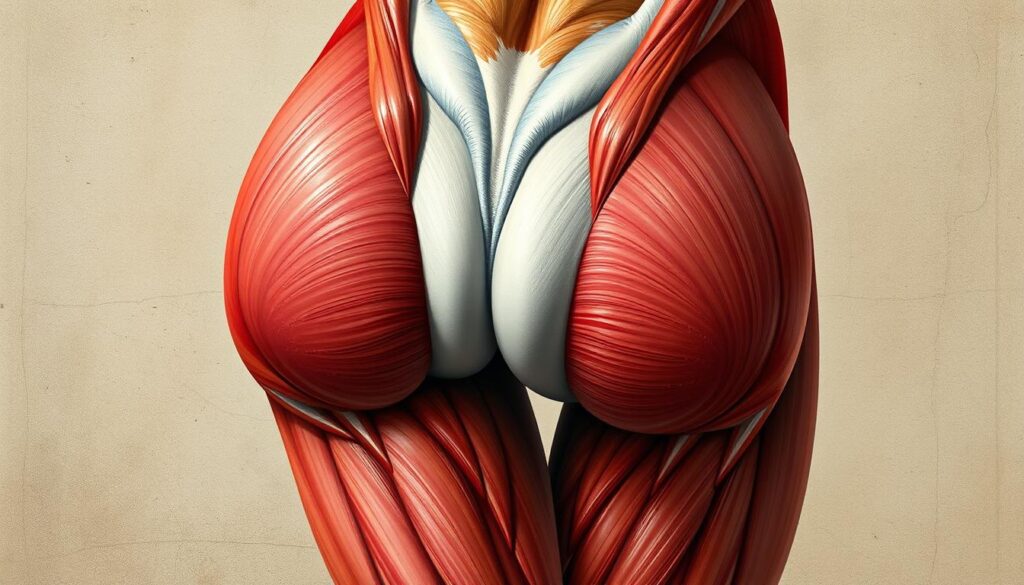
Proper Form and Technique Guidelines
When training your glutes, proper form and technique are key. They help you get the most out of your workouts and keep you safe from injury. By focusing on the right alignment and muscle engagement, you can enjoy better results.
Activation Cues for Maximum Results
To target your glutes well, add these cues to your routine:
- Squeeze your glutes at the top of the movement to really feel the muscle contraction
- Imagine pushing your heels through the floor to activate the posterior chain
- Engage your core to maintain stability and proper body alignment
- Avoid letting your hips sag or your knees cave inward during exercises
Safety Considerations During Exercise
It’s vital to stay safe while working out your glutes. Here are some tips:
- Start with lighter weights and focus on proper form before gradually increasing resistance
- Maintain a stable, neutral spine position throughout your exercises
- Avoid locking out your joints, which can put unnecessary strain on your body
- Listen to your body and stop if you experience any sharp pain or discomfort
By sticking to these guidelines, you can build a strong, toned posterior chain. This approach helps you avoid injury and boosts your glute engagement. Remember, the mind-muscle connection and proper alignment are crucial for the best results from your glute exercises.
Creating Your Glute Training Schedule
Creating a good glute training schedule is key to reaching your fitness goals. The right workout frequency, volume, and progressive overload are important. Let’s explore the main points to consider for your glute training plan.
Optimal Workout Frequency
Train your glutes 2-3 times a week for best results. This lets your muscles recover and get stronger. But, don’t overdo it to avoid burnout and injuries.
Balanced Training Volume
Your glute workouts should mix compound and isolation exercises. Aim for 12-20 sets per session. Focus on exercises that work your glutes fully.
Importance of Rest Days
Rest is as important as working out. Take 1-2 rest days between glute sessions. Use this time for light activities like walking or stretching to help recovery.
Progressive Overload Strategies
- Gradually increase the weight, reps, or sets for your glute exercises over time.
- Introduce new exercises or variations to challenge your muscles in different ways.
- Adjust your rest periods to increase the intensity of your workouts.
By following these tips and making your glute training schedule fit your needs, you’ll get stronger glutes. Remember, building great glutes takes time and effort.
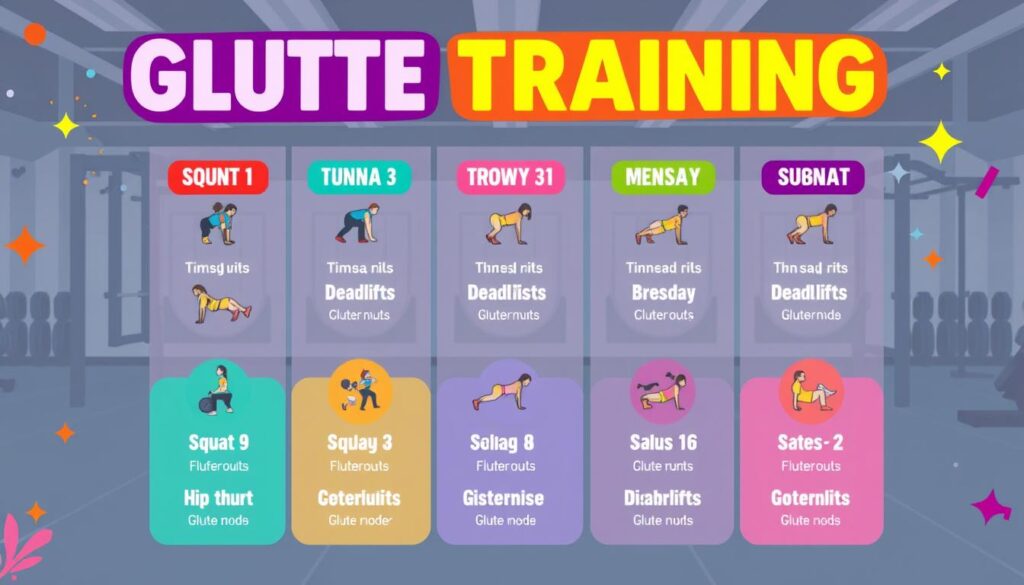
Nutrition Tips for Optimal Glute Development
Achieving a well-toned backside is not just about gym workouts. The right nutrition is key for muscle growth and recovery. Focus on a diet full of protein intake, complex carbohydrates, and healthy fats. This will help your body build and keep strong, shapely glutes.
Best Foods for Muscle Growth
Protein is the base for muscle building. Include lean meats, poultry, fish, eggs, and plant-based options like beans and grains in your diet. Complex carbs give you energy and help with muscle glycogen levels.
- Chicken, turkey, and lean red meat
- Salmon, tuna, and other fatty fish
- Eggs and dairy products
- Quinoa, brown rice, and oats
- Legumes, lentils, and nuts
Meal Timing and Portions
Timing your nutrients is important for glute development. Eat a mix of protein, carbs, and fats before and after workouts. This fuels your muscles and aids in recovery. Also, watch your portion sizes to support muscle growth without too many calories.
| Meal | Protein | Complex Carbs | Healthy Fats |
|---|---|---|---|
| Pre-Workout | 20-30g | 30-50g | 10-15g |
| Post-Workout | 20-30g | 30-50g | 10-15g |
| Main Meals | 20-30g | 30-50g | 10-15g |
By focusing on a nutrient-rich diet and nutrient timing, you can fuel your body for strong, toned glutes.
Recovery and Rest: Essential Elements for Growth
Getting a stronger, more toned butt isn’t just about working hard during workouts. It’s also about resting and recovering well. Good sleep is key because it helps your body fix and grow muscle after intense training.
Using active recovery methods like foam rolling and stretching can help too. They improve blood flow and lessen soreness. This makes your muscles feel better and more ready for the next workout. Also, taking enough rest between workouts lets your muscles fully heal and grow, leading to the results you want.
It’s important to find the right balance between pushing your muscles and giving them time to rest. By focusing on both quality sleep and active recovery, you’ll get closer to your goal of a stronger, more toned butt.
FAQ
What are the key muscles that make up the glutes?
The glutes are made up of three main muscles. These are the gluteus maximus, gluteus medius, and gluteus minimus.
What are the benefits of having strong glutes?
Strong glutes boost your fitness, posture, and sports skills. They also prevent back and knee problems.
What type of equipment is recommended for effective glute training?
Use resistance bands, dumbbells, barbells, kettlebells, and glute activation devices for training.
What are some of the best exercises for building stronger, more toned glutes?
Top exercises include squats, hip thrusts, lunges, glute bridges, and deadlifts.
How can I ensure proper form during glute exercises?
Focus on proper form to get the best results and avoid injuries. Use activation cues and keep your body aligned.
How often should I train my glutes, and what is progressive overload?
Train your glutes often and use progressive overload to keep growing stronger.
What are the best dietary considerations for optimal glute development?
Eat plenty of protein, complex carbs, and healthy fats. Timing your nutrients is also key.
How can I ensure proper recovery and rest for my glute muscles?
Rest well, stretch, and use foam rolling to help your muscles recover and stay injury-free.
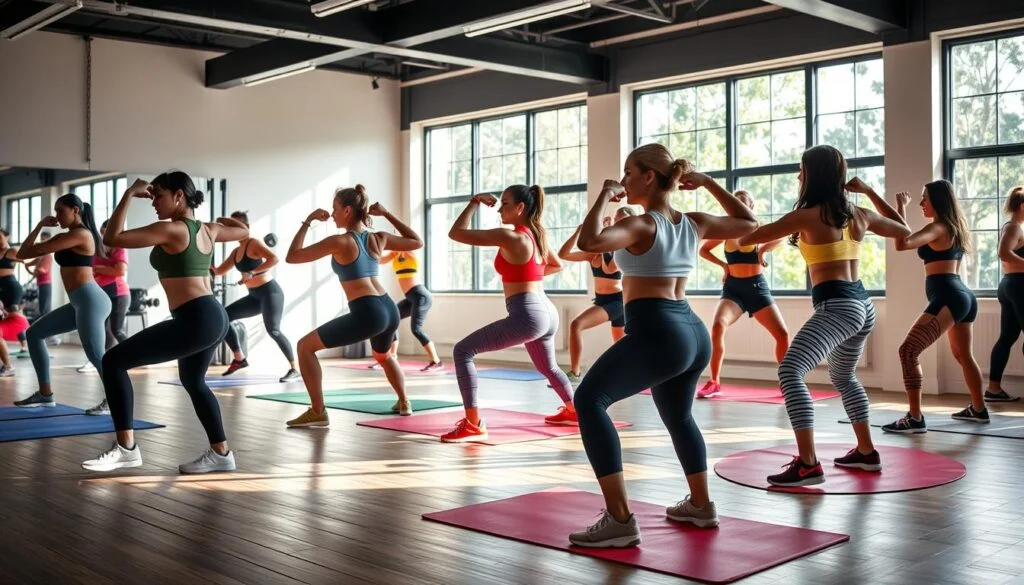
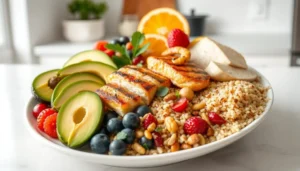
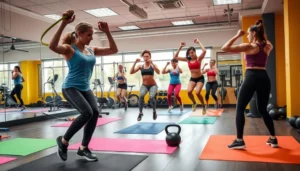

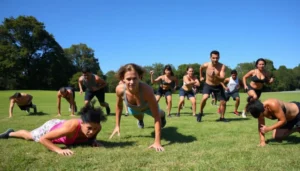
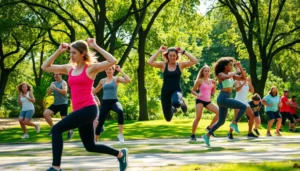
Post Comment